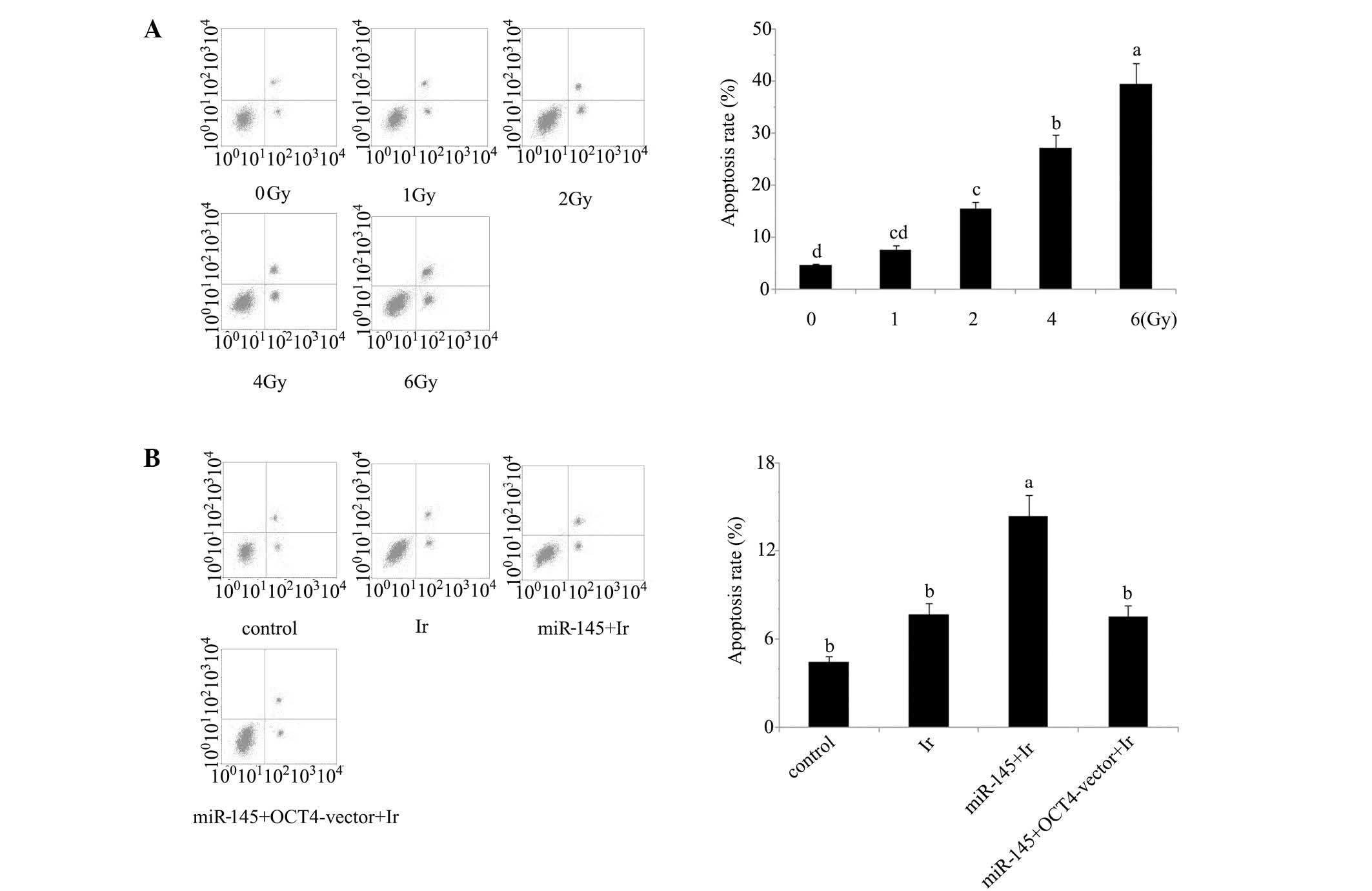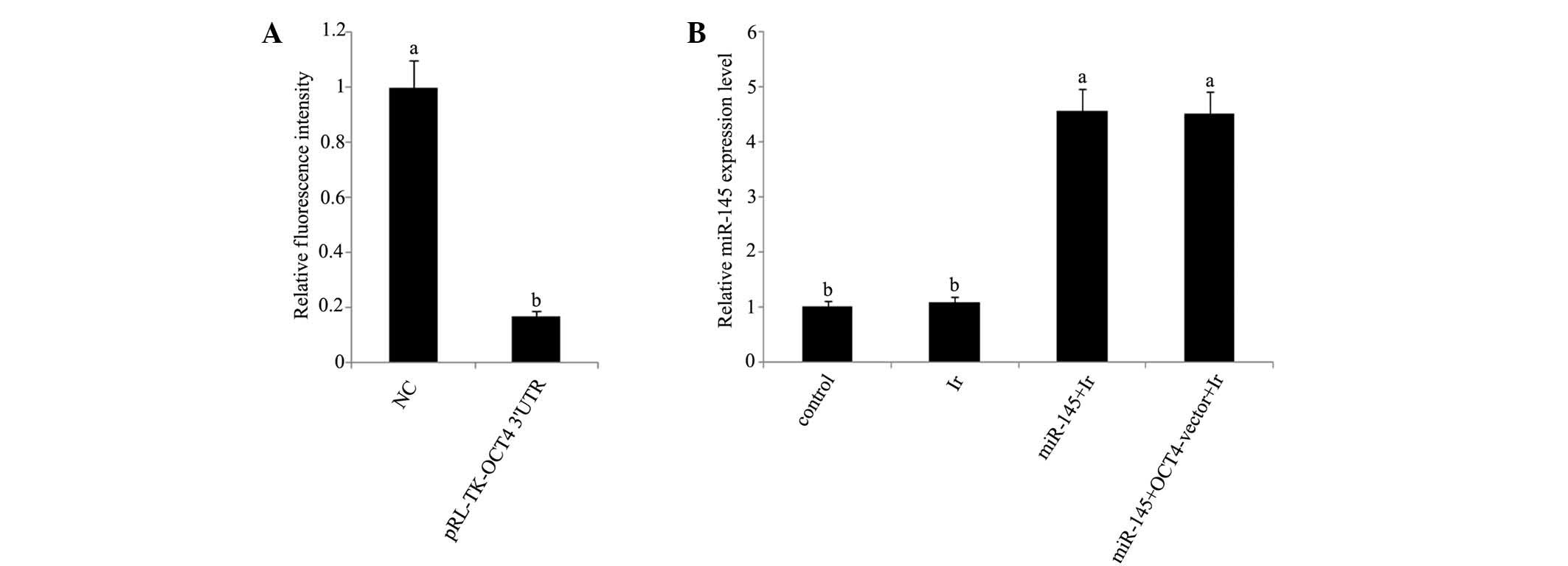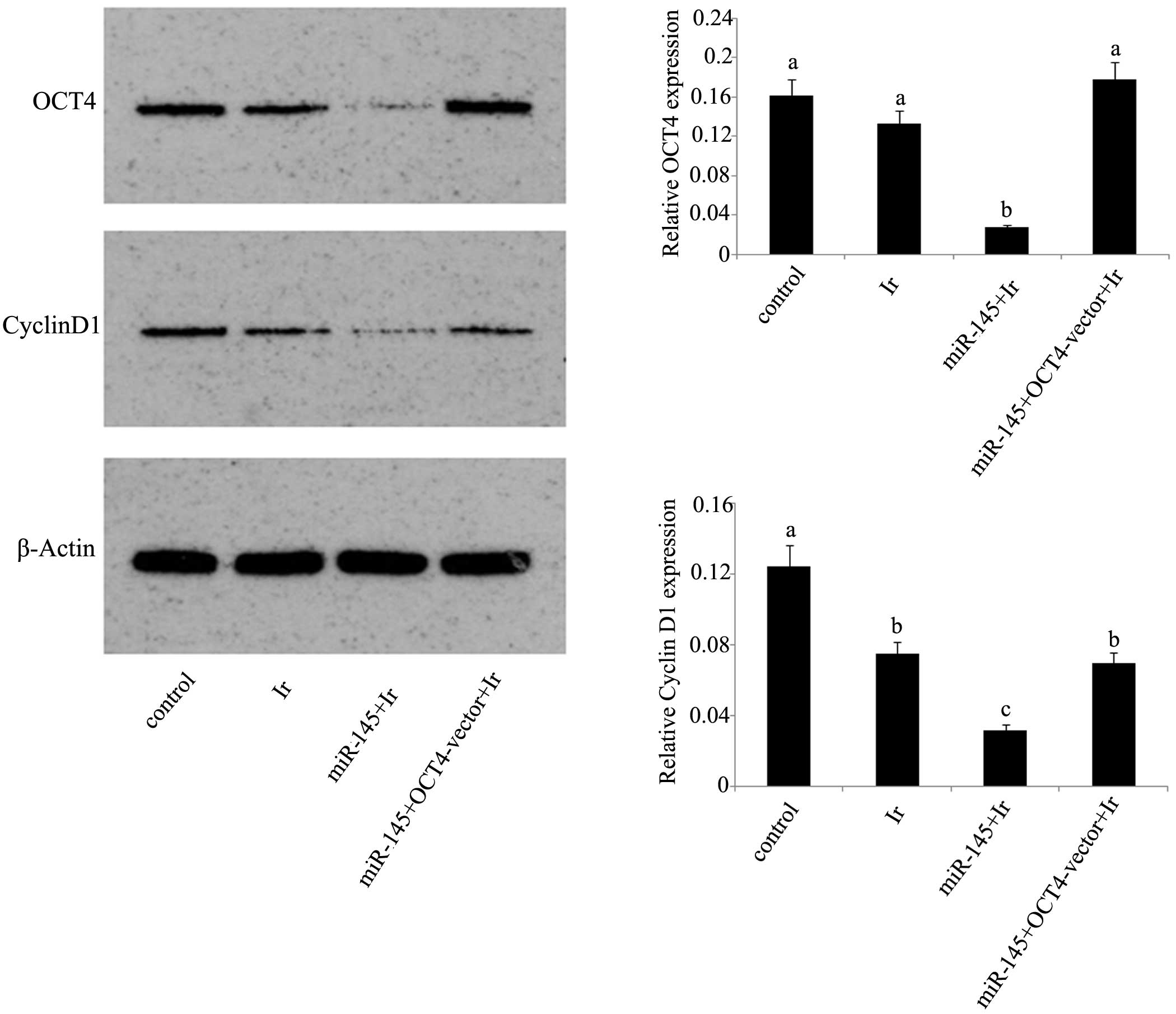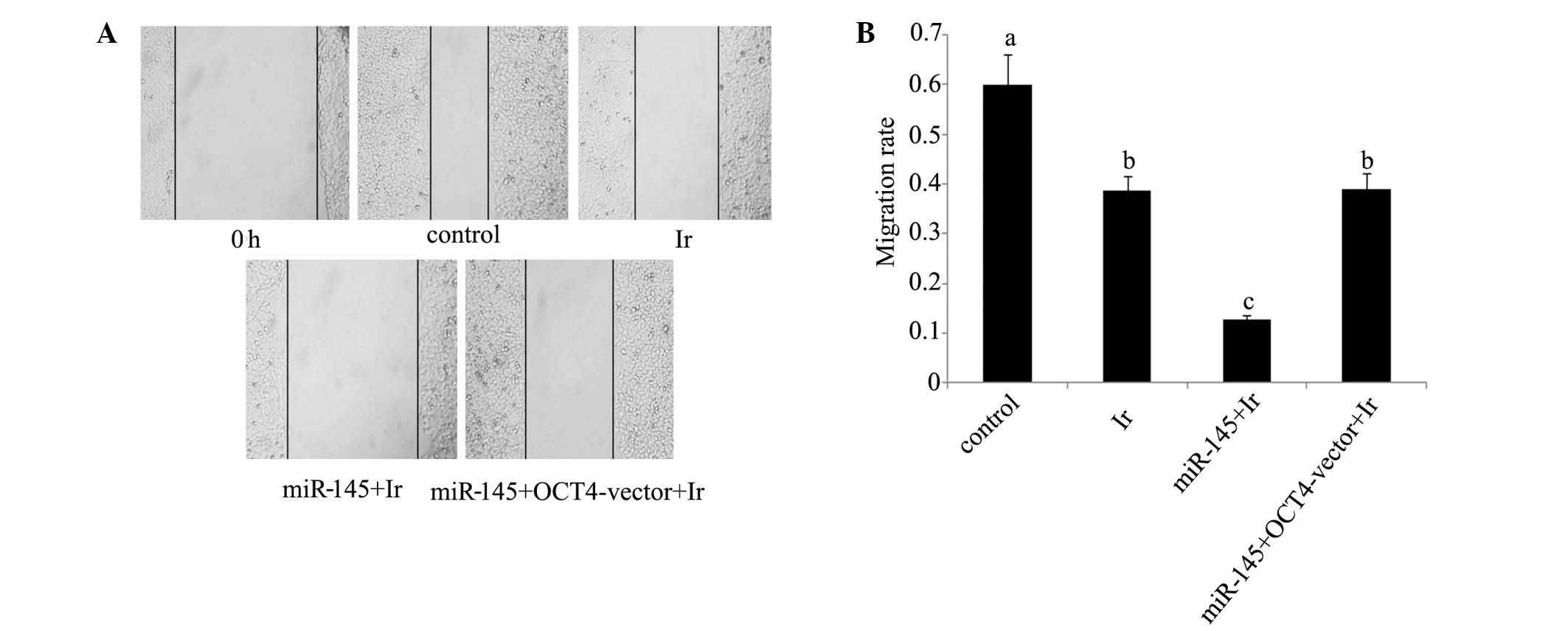|
1
|
Wang X, Tang S, Le SY, Lu R, Rader JS,
Meyers C and Zheng ZM: Aberrant expression of oncogenic and
tumor-suppressive microRNAs in cervical cancer is required for
cancer cell growth. PLoS One. 3:25572008. View Article : Google Scholar
|
|
2
|
Mongula J, Slangen B, Lambregts D, Bakers
F, Mahesh S, Lutgens L, Van Gorp T, Vliegen R, Kruitwagen R and
Beets-Tan R: Predictive criteria for MRI-based evaluation of
response both during and after radiotherapy for cervical cancer. J
Contemp Brachytherapy. 8:181–188. 2016. View Article : Google Scholar : PubMed/NCBI
|
|
3
|
Kitahara O, Katagiri T, Tsunoda T, Harima
Y and Nakamura Y: Classification of sensitivity or resistance of
cervical cancers to ionizing radiation according to expression
profiles of 62 genes selected by cDNA microarray analysis.
Neoplasia. 4:295–303. 2002. View Article : Google Scholar : PubMed/NCBI
|
|
4
|
Liu SS, Chan KY, Leung RC, Law HK, Leung
TW and Ngan HY: Enhancement of the radiosensitivity of cervical
cancer cells by overexpressing p73alpha. Mol Cancer Ther.
5:1209–1215. 2006. View Article : Google Scholar : PubMed/NCBI
|
|
5
|
Liu R, Wang X, Tian JH, Yang K, Wang J,
Jiang L and Hao XY: High dose rate versus low dose rate intracavity
brachytherapy for locally advanced uterine cervix cancer. Cochrane
Database Syst Rev. 9:CD0075632014.
|
|
6
|
Hareyama M, Sakata K, Oouchi A, Nagakura
H, Shido M, Someya M and Koito K: High-dose-rate versus
low-dose-rate intracavitary therapy for carcinoma of the uterine
cervix: A randomized trial. Cancer. 94:117–124. 2002. View Article : Google Scholar : PubMed/NCBI
|
|
7
|
Cui H, Qin Q, Yang M, Zhang H, Liu Z, Yang
Y, Chen X, Zhu H, Wang D, Meng C, et al: Bortezomib enhances the
radiosensitivity of hypoxic cervical cancer cells by inhibiting
HIF-1α expression. Int J Clin Exp Pathol. 8:9032–9041.
2015.PubMed/NCBI
|
|
8
|
Reshmi G and Pillai MR: Beyond HPV:
Oncomirs as new players in cervical cancer. FEBS Lett.
582:4113–4116. 2008. View Article : Google Scholar : PubMed/NCBI
|
|
9
|
Xue M, Zhao L, Yang F, Li Z and Li G:
MicroRNA-145 inhibits the malignant phenotypes of gastric carcinoma
cells via downregulation of fascin 1 expression. Mol Med Rep.
13:1033–1039. 2016.PubMed/NCBI
|
|
10
|
Han T, Yi XP, Liu B, Ke MJ and Li YX:
MicroRNA-145 suppresses cell proliferation, invasion and migration
in pancreatic cancer cells by targeting NEDD9. Mol Med Rep.
11:4115–4120. 2015.PubMed/NCBI
|
|
11
|
Wang S, Bian C, Yang Z, Bo Y, Li J, Zeng
L, Zhou H and Zhao RC: miR-145 inhibits breast cancer cell growth
through RTKN. Int J Oncol. 34:1461–1466. 2009.PubMed/NCBI
|
|
12
|
Ostenfeld MS, Bramsen JB, Lamy P,
Villadsen SB, Fristrup N, Sørensen KD, Ulhøi B, Borre M, Kjems J,
Dyrskjøt L and Orntoft TF: miR-145 induces caspase-dependent and
-independent cell death in urothelial cancer cell lines with
targeting of an expression signature present in Ta bladder tumors.
Oncogene. 29:1073–1084. 2010. View Article : Google Scholar : PubMed/NCBI
|
|
13
|
Gu TT, Liu SY and Zheng PS: Cytoplasmic
NANOG-positive stromal cells promote human cervical cancer
progression. Am J Pathol. 181:652–661. 2012. View Article : Google Scholar : PubMed/NCBI
|
|
14
|
Vaiphei K, Sinha SK and Kochhar R:
Comparative analysis of Oct4 in different histological subtypes of
esophageal squamous cell carcinomas in different clinical
conditions. Asian Pac J Cancer Prev. 15:3519–3524. 2014. View Article : Google Scholar : PubMed/NCBI
|
|
15
|
Vargas TH, Pulz LH, Barra CN, Kleeb SR,
Xavier JG, Catão-Dias JL, Fukumasu H, Nishiya AT and Strefezzi RF:
Immunohistochemical expression of the pluripotency factor OCT4 in
canine mast cell tumours. J Comp Pathol. 153:251–255. 2015.
View Article : Google Scholar : PubMed/NCBI
|
|
16
|
Tsai LL, Yu CC, Chang YC, Yu CH and Chou
MY: Markedly increased Oct4 and Nanog expression correlates with
cisplatin resistance in oral squamous cell carcinoma. J Oral Pathol
Med. 40:621–628. 2011. View Article : Google Scholar : PubMed/NCBI
|
|
17
|
Lo WL, Chien Y, Chiou GY, Tseng LM, Hsu
HS, Chang YL, Lu KH, Chien CS, Wang ML, Chen YW, et al: Nuclear
localization signal-enhanced RNA interference of EZH2 and Oct4 in
the eradication of head and neck squamous cell carcinoma-derived
cancer stem cells. Biomaterials. 33:3693–3709. 2012. View Article : Google Scholar : PubMed/NCBI
|
|
18
|
Kuo KK, Lee KT, Chen KK, Yang YH, Lin YC,
Tsai MH, Wuputra K, Lee YL, Ku CC, Miyoshi H, et al: Positive
feedback loop of OCT4 and c-JUN expedites cancer stemness in liver
cancer. Stem Cells. Jun 24–2016.(Epub ahead of print). View Article : Google Scholar
|
|
19
|
Lu CS, Shieh GS, Wang CT, Su BH, Su YC,
Chen YC, Su WC, Wu P, Yang WH, Shiau AL and Wu CL:
Chemotherapeutics-induced Oct4 expression contributes to drug
resistance and tumor recurrence in bladder cancer. Oncotarget. May
26–2016.(Epub ahead of print).
|
|
20
|
Xu N, Papagiannakopoulos T, Pan G, Thomson
JA and Kosik KS: MicroRNA-145 regulates OCT4, SOX2 and KLF4 and
represses pluripotency in human embryonic stem cells. Cell.
137:647–658. 2009. View Article : Google Scholar : PubMed/NCBI
|
|
21
|
Livak KJ and Schmittgen TD: Analysis of
relative gene expression data using real-time quantitative PCR and
the 2−ΔΔCt method. Methods. 25:402–408. 2001. View Article : Google Scholar : PubMed/NCBI
|
|
22
|
Dote H, Burgan WE, Camphausen K and
Tofilon PJ: Inhibition of hsp90 compromises the DNA damage response
to radiation. Cancer Res. 66:9211–9220. 2006. View Article : Google Scholar : PubMed/NCBI
|
|
23
|
Shuryak I and Brenner DJ: A model of
interactions between radiation-induced oxidative stress, protein
and DNA damage in Deinococcus radiodurans. J Theor Biol.
261:305–317. 2009. View Article : Google Scholar : PubMed/NCBI
|
|
24
|
Li C, Yan Y, Ji W, Bao L, Qian H, Chen L,
Wu M, Chen H, Li Z and Su C: OCT4 positively regulates Survivin
expression to promote cancer cell proliferation and leads to poor
prognosis in esophageal squamous cell carcinoma. PLoS One.
7:e496932012. View Article : Google Scholar : PubMed/NCBI
|
|
25
|
Hu T, Liu S, Breiter DR, Wang F, Tang Y
and Sun S: Octamer 4 small interfering RNA results in cancer stem
cell-like cell apoptosis. Cancer Res. 68:6533–6540. 2008.
View Article : Google Scholar : PubMed/NCBI
|
|
26
|
Lin Y, Yang Y, Li W, Chen Q, Li J, Pan X,
Zhou L, Liu C and Chen C: Aself-renewal and survival of embryonal
carcinoma cells. Mol Cell. 48:627–640. 2012. View Article : Google Scholar : PubMed/NCBI
|
|
27
|
Zhang Z, Zhu Y, Lai Y, Wu X, Feng Z, Yu Y,
Bast RC Jr, Wan X, Xi X and Feng Y: Follicle-stimulating hormone
inhibits apoptosis in ovarian cancer cells by regulating the OCT4
stem cell signaling pathway. Int J Oncol. 43:1194–1204.
2013.PubMed/NCBI
|
|
28
|
Wang YD, Cai N, Wu XL, Cao HZ, Xie LL and
Zheng PS: OCT4 promotes tumorigenesis and inhibits apoptosis of
cervical cancer cells by miR-125b/BAK1 pathway. Cell Death Dis.
4:e7602013. View Article : Google Scholar : PubMed/NCBI
|
|
29
|
Jeselsohn R, Brown NE, Arendt L, Klebba I,
Hu MG, Kuperwasser C and Hinds PW: Cyclin D1 kinase activity is
required for the self-renewal of mammary stem and progenitor cells
that are targets of MMTV-ErbB2 tumorigenesis. Cancer Cell.
17:65–76. 2010. View Article : Google Scholar : PubMed/NCBI
|
|
30
|
Shimura T, Noma N, Oikawa T, Ochiai Y,
Kakuda S, Kuwahara Y, Takai Y, Takahashi A and Fukumoto M:
Activation of the AKT/Cyclin D1/Cdk4 survival signaling pathway in
radioresistant cancer stem cells. Oncogenesis. 1:e122012.
View Article : Google Scholar : PubMed/NCBI
|
|
31
|
Chu Q, Han N, Yuan X, Nie X, Wu H, Chen Y,
Guo M, Yu S and Wu K: DACH1 inhibits Cyclin D1 expression, cellular
proliferation and tumor growth of renal cancer cells. J Hematol
Oncol. 7:732014. View Article : Google Scholar : PubMed/NCBI
|
|
32
|
Jin Q, Li X and Cao P: EphA2 modulates
radiosensitive of hepatocellular carcinoma cells via
p38/mitogen-activated protein kinase-mediated signal pathways.
Kaohsiung J Med Sci. 31:510–517. 2015. View Article : Google Scholar : PubMed/NCBI
|
|
33
|
Suresh TN, Hemalatha A, Kumar ML Harendra
and Mohiyuddin SM Azeem: Evaluation of histomorphological and
immunohistochemical parameters as biomarkers of cervical lymph node
metastasis in squamous cell carcinoma of oral cavity: A
retrospective study. J Oral Maxillofac Pathol. 19:18–24. 2015.
View Article : Google Scholar : PubMed/NCBI
|
|
34
|
Hwang SJ, Lee HW, Kim HR, Song HJ, Lee DH,
Lee H, Shin CH, Joung JG, Kim DH, Joo KM and Kim HH: Overexpression
of microRNA-95-3p suppresses brain metastasis of lung
adenocarcinoma through downregulation of Cyclin D1. Oncotarget.
6:20434–20448. 2015. View Article : Google Scholar : PubMed/NCBI
|
|
35
|
Chen YJ, Lee LY, Chao YK, Chang JT, Lu YC,
Li HF, Chiu CC, Li YC, Li YL, Chiou JF and Cheng AJ: DSG3
facilitates cancer cell growth and invasion through the
DSG3-plakoglobin-TCF/LEF-Myc/cyclin D1/MMP signaling pathway. PLoS
One. 8:e640882013. View Article : Google Scholar : PubMed/NCBI
|
|
36
|
Atkinson RL, Zhang M, Diagaradjane P,
Peddibhotla S, Contreras A, Hilsenbeck SG, Woodward WA, Krishnan S,
Chang JC and Rosen JM: Thermal enhancement with optically activated
gold nanoshells sensitizes breast cancer stem cells to radiation
therapy. Sci Transl Med. 2:55ra792010. View Article : Google Scholar : PubMed/NCBI
|
|
37
|
Card DA, Hebbar PB, Li L, Trotter KW,
Komatsu Y, Mishina Y and Archer TK: Oct4/Sox2-regulated miR-302
targets Cyclin D1 in human embryonic stem cells. Mol Cell Biol.
28:6426–6438. 2008. View Article : Google Scholar : PubMed/NCBI
|














